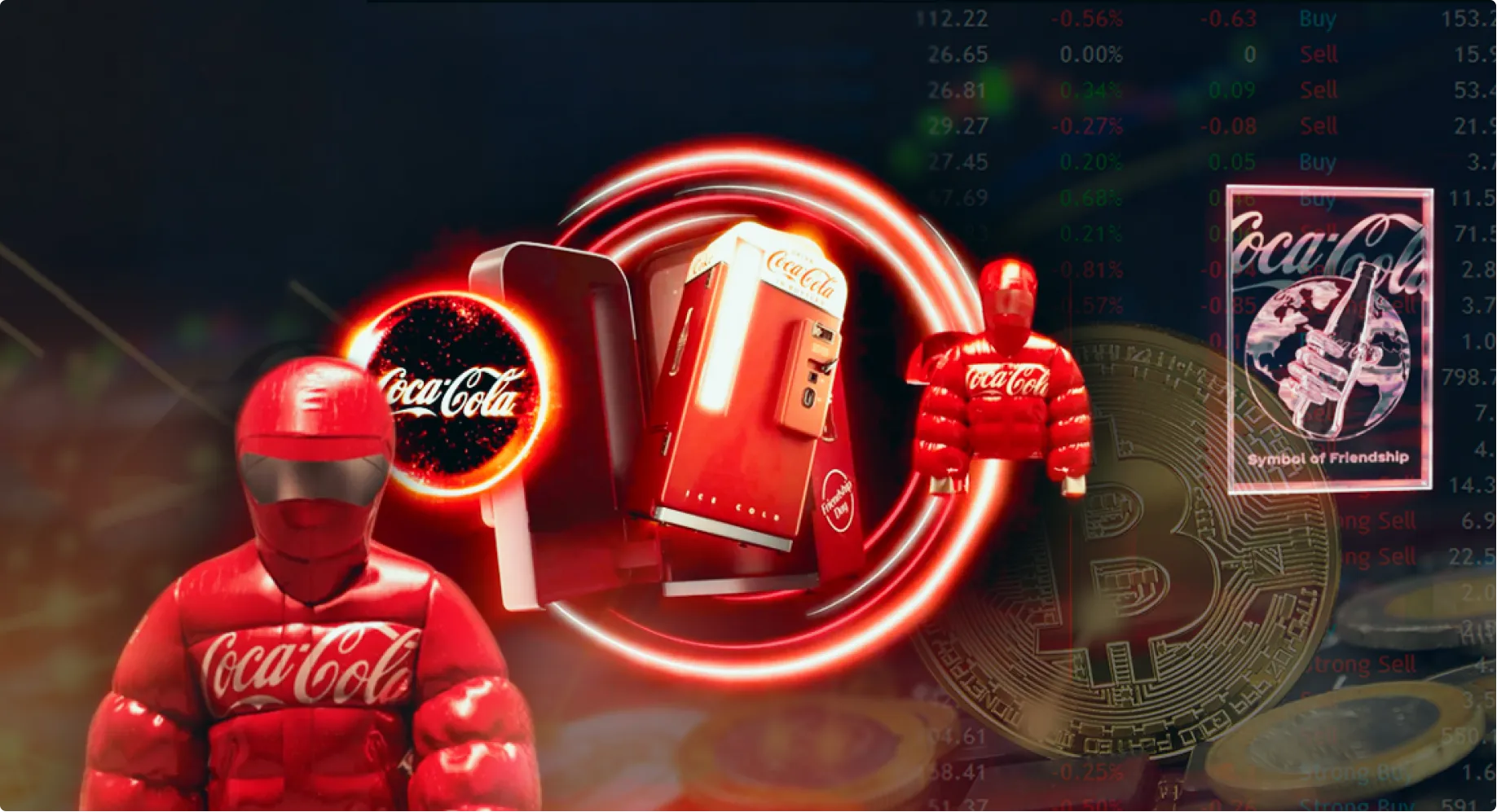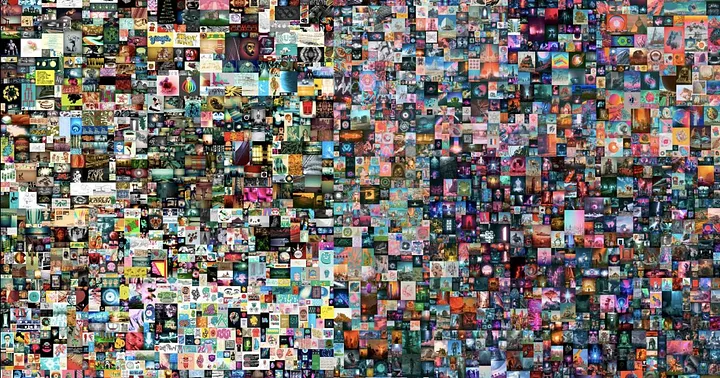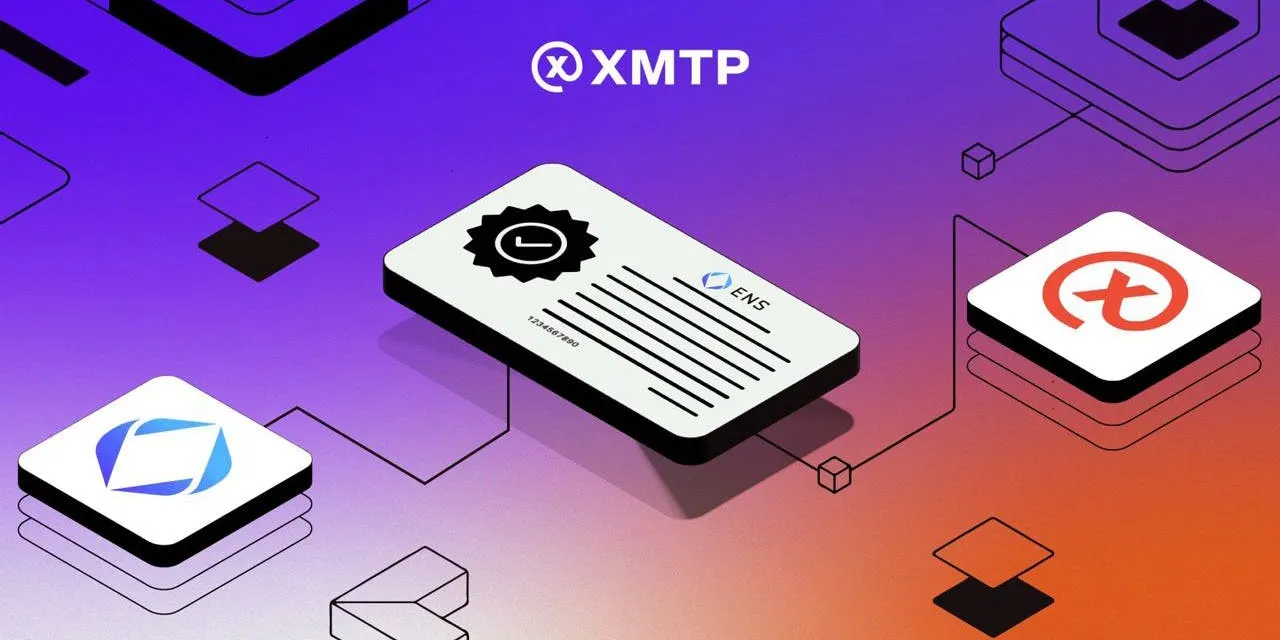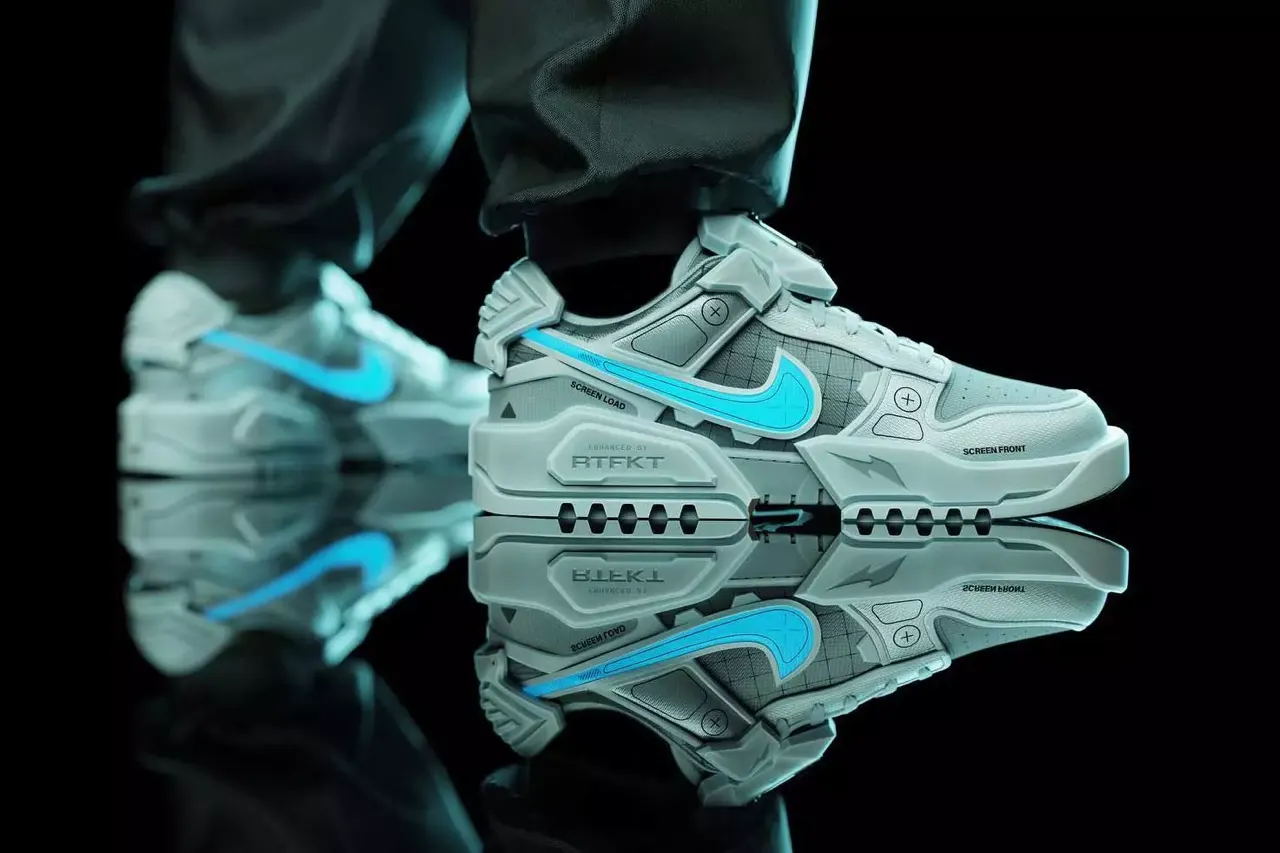Exploring the Power of NFTs 2.0: Use cases to spark your excitement
Exploring the Power of NFTs 2.0: Use cases to spark your excitement.
NFTs are digital assets stored on a blockchain to record ownership and authenticity. We have seen a lot of speculation around NFTs, but besides digital collectibles, we haven’t seen that much attention to the many more compelling use cases. With new NFT standards on the rise, we can expect more innovation in the space in the future. Here are some use cases to be excited about.
Gaming
I used to enjoy playing the NBA 2K MyCareer mode frequently. This mode enabled me to create my basketball player, level up their skills, modify their playing style, and earn points to buy in-game apparel. However, it required a lot of effort to progress, and when a new version of the game was released, I had to restart from the beginning. It became increasingly frustrating, mainly when 2K made it more difficult to earn rewards through gameplay and instead heavily promoted the purchase of loot boxes, virtual currency, and in-game items. Items you would lose as soon as the game's next version comes out. As a result, many players, like me, are done playing these games.
NFTs could bring a new opportunity for game developers to do this differently. They could offer players a new level of ownership and control over in-game items and have different options to monetize their games, like through royalties of items traded on open marketplaces.
The new LSP8 standard presents an exciting opportunity for game developers to enhance the gaming experience for players. With LSP8 collections, NFTs can now have token IDs that include addresses of other smart contracts. Paired with ERC725Y, a data store designed for on-chain information that can be dynamically updated, this offers developers more flexibility and options to create more advanced NFTs with new features.
Just picture having a game character, like that basketball player in MyCareer, but as an NFT 2.0. Your character would have its own smart contract with an infinite key-value store, allowing it to level up and be customized entirely on-chain. All of its progress and customizations could be stored on the smart contract. Plus, it could even own other in-game items (that are also NFTs). You could transfer or sell your character with all its progress and other owned items whenever you lose interest in the game. This could be revolutionary, especially for role-playing games that require a lot of time and grinding to level up.
NFTs could transform the gaming industry by empowering players to own their in-game assets, earn money from them, and provide game developers with new revenue streams. While there have been a lot of talks about Web3 gaming, we haven’t seen much true success stories yet. It takes a long time to develop a good game, so we have to keep an eye out on the space, but with better NFT standards and increased productivity through AI, it will be interesting to see how gaming will evolve.
Traceable Verification Systems
Sustainability and ethical practices have become increasingly important, especially in the fashion industry. To address these issues effectively, traceable verification systems are necessary. NFTs offer a powerful solution to achieve this goal. They can provide a secure and transparent way to track the lifecycle of fashion products.
By tokenizing garments and accessories using NFTs, brands can create a digital passport that follows these items throughout their lifecycle. This record can be used to verify that products are indeed recycled. It can also incentivize sustainable consumer behavior, such as participating in take-back programs or choosing products made from recycled materials.
An exciting project to follow in this space is Candour.Digital, a new platform built on top of LUKSO, is leveraging the most current standards to help fashion brands to prove where & when a product is recycled.
The ERC-725 standard offers a dynamic on-chain key-value store, making it suitable for these use cases. The on-chain information gets updated over time to keep track of the current state of an item. Combined with the power of a Transaction Relayer Service, companies can offer a seamless user experience in which the user does not need to know about the technical underlies and deal with gas fees. These new offerings and standards can bring new applications that were impossible in the last few years.
Ticketing
Using NFTs for event ticketing is a great idea. By selling tickets in the form of NFTs, fans are provided with a secure digital asset that creates new opportunities for artists to connect with their fans.
Artists can easily airdrop new tickets or discounts for upcoming events. They can identify their most devoted fans, who attend all their events, and provide them with special treatment. Furthermore, they can even organize exclusive events or content solely for fans who, for example, attended a particular concert.
This use case is already something that is being used right now. For example, Avenged Sevenfold fans holding the artist’s NFTs were allowed to purchase tickets before others through Ticketmaster’s integration. This has already shown promising results, with 20% of the fan club members buying tickets with their crypto wallet.
NFTs also allow easy fan-to-fan ticket sales without a middleman. Artists could now also benefit from secondary sales, as they can enable royalties on secondary sales.
Music
NFTs have the potential to revolutionize several aspects of the music industry. For instance, musicians can use NFTs as concert tickets, providing opportunities for long-term engagement with their fans. Additionally, NFTs can be utilized for token-gated music, as demonstrated by the partnership between Moonbirds and Spotify. Moonbirds holders can access the Moonbirds playlist by connecting their wallets, creating a new experience with a famous Web2 brand.
Moreover, NFTs can help upcoming and indie musicians cultivate a dedicated fan base and earn a living. For example, Sound.xyz is one platform that supports artists using web3-native music and economic tools, including NFTs, to enhance artist-fan connections and create unique listening experiences. Artists can sell limited edition NFTs of their songs, and buyers can receive special community access as perks.
As AI-generated music emerges, artists could allow their voices to be used in AI-generated songs, provided they receive royalties. NFTs 2.0 can store dynamic data and efficiently manage flexible royalties settings on-chain. The NFT 2.0 marketplace Universal Page provides a simple user interface for specifying different receiving addresses and their corresponding percentages. These flexible on-chain settings are ideal for handling AI-generated music royalties, allowing artists to “rent out” their voice while ensuring fair compensation for all creators involved.
NFTs enable artists and song creators to connect with their audience, offer rewards, and handle royalties. As AI-generated music gains popularity in this world with numerous intermediaries, NFTs could play a critical role in the future of the music industry.
 Flexible Royalty Settings on Universal Page
Flexible Royalty Settings on Universal Page
Advertising and sponsorships
NFTs provide a new way for companies to engage with their audience and promote their brand. Companies can create branded NFTs representing their products or services, which can be used as a promotional tool or as a reward for loyal customers.
Let’s say a sports team is selling NFT tickets representing game entry. The team could partner with companies to offer sponsored NFTs that provide additional benefits to ticket holders, such as access to a VIP lounge or a meet and greet with team members.
A sports apparel company could sponsor a limited edition NFT that gives the ticket holder a discount on their products. The NFT could feature the company’s logo or branding and could be sold as a limited edition collectible. This would promote the apparel company’s products to sports fans and provide an additional revenue stream for the sports team.
The same would work for a music festival that sells NFT tickets. The festival organizers could partner with companies to offer sponsored NFTs that provide additional benefits to ticket holders, such as access to exclusive areas or merchandise. For example, a beverage company could sponsor a limited edition NFT that gives the ticket holder a free drink at the festival.
NFTs that feature branding are visible to both their owners and their connections. The emergence of Web3 social apps makes it easy to view the NFTs of your friends. In addition, if you have a personalized Universal Page showcasing all of your digital assets, anyone who visits your page can view your branded NFT, resulting in increased visibility.
 Louis Vuitton to Budweiser: 6 Big Brands Breaking into NFTs | Bueno Blog
Louis Vuitton to Budweiser: 6 Big Brands Breaking into NFTs | Bueno Blog
Evolving Digital Art
NFTs have revolutionized the world of Digital Art, making it easier for creators to sell their work and generating new revenue streams for struggling artists. The most well-known example of this success is digital artist Beeple, who made a record-breaking $69 million at a Christie’s auction.
With new standards on the rise and the power of AI-generated art, it will be fascinating to see what digital artists create. With ERC-725Y, contracts have an infinite key-value store to store information and new functions to update that data store.
With more flexibility and upgradability, imagine generative art that changes based on the number of holders or art that evolves after specific events. Think of a digital fashion item that varies based on the season or a music album that adds new songs over time. Think of royalty settings that adjust based on trading volume or your profile picture used in AI-generated art. The possibilities for fun mini-games, cool collectibles, or profound artworks are exciting.

Communities and communication
Many NFT communities were initially formed on Discord servers by holders of specific NFT collections, with the promise of “going to the moon.” However, as many prices have dropped and founders lost interest, these servers have become less active. Despite this, some NFT communities remain active and promising, but creating exclusive Discord servers for NFT holders seems to be just the beginning of leveraging blockchains for community building.
There is much room for growth, and leveraging Universal Profiles and their built-in permission systems could be the missing key in Web3 messaging. Just like you don’t want your email to be public for everyone, you also don’t want anyone that knows your wallet address to be able to message you. Managing permissions in your Universal Profile looks pretty suitable with a Web3 messaging protocol like XMTP.
NFTs could play a part in improving the user experience of managing these types of permissions. Instead of adding each allowed address one by one and specifying what permissions they should get, you could authorize everyone that is part of the same DAO or community. Or you could create special NFTs for your friend group to give them instant permission to send you messages.
We can expect to see much better tools for organizing Web3 communication, and it will be exciting to see the role of social dApps and chat platforms in building new communities.
 “Open protocol and network for secure web3 messaging — XMTP.”
“Open protocol and network for secure web3 messaging — XMTP.”
Certification and achievements
Online courses and certificates are difficult to verify as they are stored in various systems. For example, an individual can claim to have completed a course and display a badge on their LinkedIn profile, but there is no way to verify its authenticity. However, if the badge is an NFT 2.0, one can easily see who issued it and confirm its validity.
In a previous software development job, we used a gamification tool to award points and badges for achievements for completed work. It was a fun way to show and receive recognition, but unfortunately, these achievements would only be valuable in that closed system. They could not be shared with future employers. If they were NFTs, they would have retained their value even outside the organization and could have been helpful in my career progression.
Companies can now issue NFTs to their employees as digital certificates for completing courses or achieving certain milestones. These NFTs can prove an individual’s professional capabilities and be used for verification.
NFTs can also validate personal branding by representing accomplishments, endorsements, or testimonials. They can even be used just to express thoughts on specific topics. Coinbase, for instance, has launched a “Stand with Crypto NFT” free-to-mint digital asset that people can use to show their support. This NFT is not meant for trading and has no intended use other than as a commemorative item. Its purpose is to demonstrate that you are part of a growing community that has faith in the future of cryptocurrency.
Phygitals
By establishing digital identities for physical products, creators can enable digital ownership, continuously gather their unique and singular data history, and have lasting and direct access to their owners.
Phygitals, or physical-digital hybrids, are a new type of NFT that combine physical goods with digital ownership. This could include fashion items, where the physical item is shipped to the buyer, but the ownership and authenticity are recorded on the blockchain. This opens up new possibilities for brands to create limited-edition collections authenticated through NFTs and sold as high-value collectibles. Digital fashion is an emerging trend in the NFT space. Designers create digital clothing items that can be worn in virtual environments like video games, social media, and virtual/augmented reality experiences.
For example, Nike uses NFTs to authenticate and sell limited-edition sneakers and other physical goods. This represents a new frontier for NFTs and could bring the technology into the mainstream.
 Nike, RTFKT, Tiffany & Gucci Top NFT Profit Rankings: Full List
Nike, RTFKT, Tiffany & Gucci Top NFT Profit Rankings: Full List
Tokenize real-world assets
As seen earlier in this article, we can make tracking the lifecycle of physical products more transparent and secure by utilizing NFT 2.0 standards. The same can be expected for tracking ownership of physical assets. This often involves many middlemen; some could soon be replaced by a trusted decentralized network that offers a transparent ledger.
However, this is a bit tricky since you’re dealing with both the transfer of the ownership (on-chain) and the physical asset. You can’t buy an NFT of a car on Universal Page and expect it to arrive at your doorstep magically. Therefore, we will always see some intermediaries involved in the transaction of physical assets. But, tracking ownership for real-world assets would be much more transparent when done on a decentralized network. It would involve fewer people (who take a cut of the transaction), making it more cost-effective. We have already seen real estate being sold using an NFT, demonstrating the potential of tokenized assets. With more flexible standards and a better on-chain reputation system, we’ll see the process of tokenized assets improving and potentially transforming how we buy and sell property.
 The First NFT Home Just Sold for $175,000 | Entrepreneur
The First NFT Home Just Sold for $175,000 | Entrepreneur
Profiles, websites & usernames
NFTs could power domains, profiles, and usernames. With Web3 social apps, you own your username and can easily switch from one app to another and bring all your data. A powerful example is the Lens Profile NFT, the main object in the Lens Protocol. The NFT contains the history of all posts, mirrors, comments, and other content you generate. Plus, it records on-chain relationships.
A more powerful example of on-chain profiles is Universal Profiles, although it is important to note that it differs from an NFT or NFT Profile. Universal Profiles are made of a collection of smart contracts that serve as your account and offer a multitude of features. Additionally, it doubles as a wallet, allowing it to own tokens and NFTs.
We’ve also seen a lot of adoption of ENS (Ethereum Name Service). This unique digital asset represents the ownership of a decentralized human-readable domain name for wallets, websites, & more.
ENS allows users to create or purchase domain names ending in .eth, which can be used to identify their cryptocurrency wallet addresses, decentralized websites, or decentralized applications (dApps). These domain names are represented as NFTs, which ensures their uniqueness, ownership, and transferability within the Ethereum ecosystem.
Another example is the Universal Page Name (UPN), an NFT that users can mint to create their personal website or NFT storefront.
This NFT uses the LSP8 standard with the token ID type `string`. This means the unique name you choose is stored inside the token ID. You fully own that name and can easily sell or transfer it. And when you do, the new owner’s Universal Profile details will appear on the customized page. This makes creating, customizing, and trading personal websites easy without any middlemen involved.
Digital Fashion
The fashion industry is undergoing a digital revolution that challenges traditional business models. One exciting development in digital fashion is using NFTs to create unique clothing pieces that can be owned and traded like physical items.
This opens up exciting possibilities for fashion enthusiasts — imagine owning a one-of-a-kind digital dress that can be worn in virtual reality or displayed on social media. Similarly, you could purchase a limited edition digital t-shirt from your favorite band’s online store.
While our digital lives and identities become increasingly important, it makes sense to see that people start to care more about their online appearances. Everything we care about in real life moves slowly to the virtual worlds of the web. People who use fashion to express themselves, to stand out, or to flex will also want to do that in their digital lives, and NFTs are the perfect tool for that.
The Dematerialised, an experimental NFT marketplace on LUKSO, is the space leader of Digital Fashion, working with big brands like Karl Lagerfield, RTFKT, and many more.
 MCQ is Launching Its First NFT Collection on THE DEMATERIALISED
MCQ is Launching Its First NFT Collection on THE DEMATERIALISED
Conclusion
In conclusion, the potential of NFTs 2.0 goes far beyond just digital collectibles and art. It’s clear that with the rise of new standards like LSP8 and ERC-725, a wide range of applications and use cases are emerging. From revolutionizing the gaming industry to traceable verification systems in fashion, ticketing, music, digital art, and the tokenization of real-world assets, NFTs are paving the way for innovations. Moreover, the transformation of communities, communication, and certifications through NFTs highlights the numerous possibilities to create value and change the way we live and interact with each other in the digital world.
As the NFT space matures, I’m looking forward to witnessing the growth of these great use cases and the new ideas they inspire.





